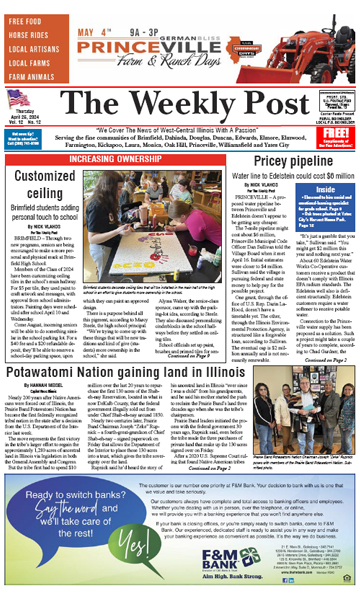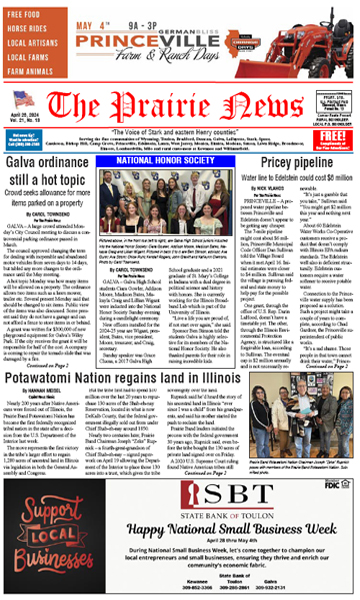By BILL KNIGHT
For The Weekly Post
Business districts in The Weekly Post area communities seem like something out of an old “Twilight Zone” episode: eerily quiet, with closed shops, few vehicles and fewer pedestrians, all affected by the pandemic and precautions to avoid it. The resulting economic woes are because of the COVID19 virus and publichealth safeguards that included closing many businesses, which laid off employees.
Some lost jobs will be temporary; others permanent. In March, rural employment dropped by less of a percentage than cities, according to the U.S. Bureau of Labor Statistics (BLS): down 300,000 (1.2 percent) compared to 2.6 million (1.9 per cent). Also, rural America had been on an upswing before the pandemic hit, BLS’ county breakdown shows – gaining jobs.
Historically, rural job growth has been less robust than urban areas’job creation, said Bill Bishop of the Center for Rural Strategies. But compared to February 2019, rural jobs this winter were up 110,000 nationally from last February. “Job growth in rural counties has been concentrated in oil- and gas-producing counties,” he said.
Of course, in the last few months, rural areas have lost hundreds of thousands of jobs, but even those losses could have been worse. Rural counties were slower to add jobs in the recovery after the Great Recession from December 2007-June 2009, Bishop said. “Now rural counties seem to be slower losing jobs in response to the pandemic,” he said, “– at least for now.”
More than 38 million Americans have lost their jobs in the last 9 weeks, giving the nation a 17.2 percent unemployment rate, higher than the 18-month Great Recession. Earlier this month, the BLS reported that in April, the country lost 10 times the number of jobs as last April: 20,626,000 compared to 2,600,000.
In that month alone, the country lost all the job growth that had happened since President Obama’s first term. That’s obviously felt by many households.
A Census Bureau survey released last week said that more than 20 percent of Americans said they had little or no confidence in being able to pay the next month’s rent or mortgage. As for Illinois, the state’s jobless rate is now a record-high 16.4 percent, according to the Illinois Department of Employment Security (IDES). That’s up from 4.4 percent before the pandemic, and reflects 762,000 lost jobs in April, mostly in “leisure and hospitality” (restaurants and taverns, hotels and theaters, concerts and sporting events).
Jobless benefits are paid by states, but the $2.2 trillion CARES Act (Coronavirus Aid, Relief and Economic Security) that Congress passed in March provides an additional $600 in weekly benefits. However, that expires in July. Federal Reserve chair Jerome Powell, who predicted joblessness could peak at 20-25 percent, said the country will probably need three to six more months of government financial help.
“We may need to do more, and Congress as well,” Powell said. A Pew Research Center survey out May 15 showed that 3 in 10 Americans have lost jobs or took pay cuts.
Copyright © 2023 illinoisweeklies.com







